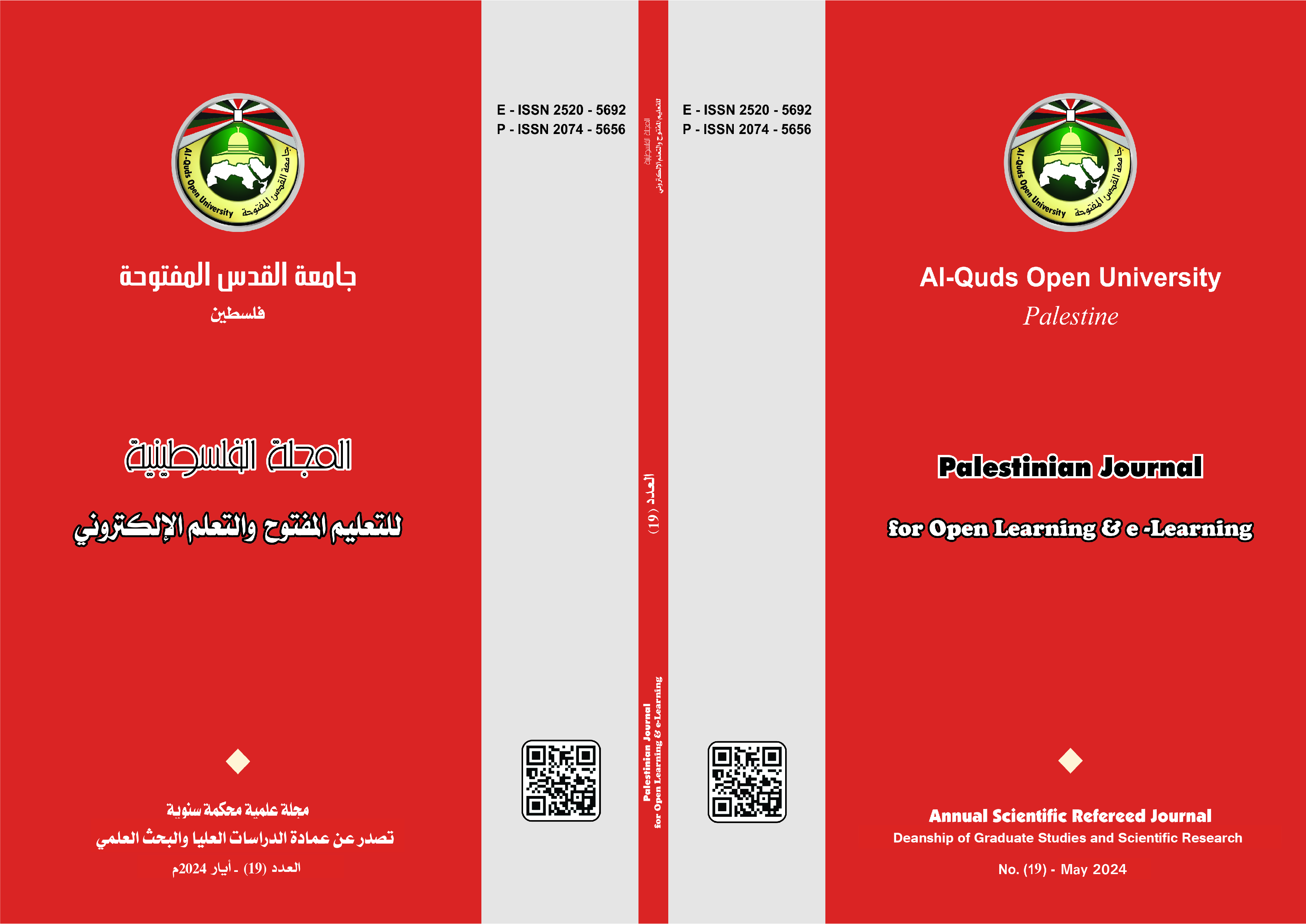Measuring the Level of Trainees’ Satisfaction with the Training Programs Implemented by Nizwa Educational Training Center According to the Hammond Model
DOI:
https://doi.org/10.33977/0280-012-019-002Keywords:
Trainee satisfaction level, Hammond model, Educational Training Center, Sultanate of OmanAbstract
Objectives: The study aimed to measure the level of satisfaction of trainees at the Educational Training Center in Nizwa from the point of view of teachers according to the Hammond model, moreover to know the differences in the level of the subjects with respect to the training programs provided to them, through the level of learning achieved by the examined people before and after the program.
Methods: To achieve the objectives of the study, the researcher used the descriptive approach and the study was the tool. A questionnaire, was distributed to the examined people and their responses were monitored after completing the programs provided to them. The researcher used two measurement scales, satisfaction level scale, and learning level scale.
Results: The study concluded that both the satisfaction level and the learning level of the trainees at Nizwa Educational Training Center were high, as well as There are no statistically significant differences in numbers less than or equal to 0.05 for levels due to gender. The results of the study showed a similarity in the level of satisfaction and learning between the genders, this is evidence for both the lack of gender bias and the strength of the programs. Introduction, while statistically significant differences were found the level of significance less than or equal to 0.05 to the level of trainees’ satisfaction and the level of trainees’ learning due to the field of subjects they study from the first field Islamic education, Arabic language, and social studies or the second field mathematics and science or English.
Conclusions: The study recommended the need to develop performance standards and indicators for the training programs offered at the training center.
References
References
Al-Tuwairshi, S. K. A., Hassan, A. S., and Al-Kharusi, H. A. T. (2014). Evaluating the effectiveness of training programs for faculty members in technical colleges in the Sultanate of Oman according to the Hammond model. Sultan Qaboos university.
Abdul Rahman, S. (2008). Psychometrics theory and practice (5th ed.). Heba El Nile for Publishing and Distribution. Cairo.
Al-Amiri, H. A. A., and Al-Maliki, A. S. (2022). Evaluation of the master’s program in curricula and teaching methods of mathematics at Taif University in light of the Hammond model.] Master Thesis[ Umm Al Qura University. Kingdom of Saudi Arabia
Al-Harmaliyah, H. S. A. (2020). Measuring the impact of training programs provided to librarians at Sultan Qaboos University on improving their performance according to the Crick-Patrick model. (Unpublished Master’s Thesis) Sultan Qaboos University.
Allam, S. M. (2007). Institutional educational evaluation, its foundations, methodologies, and applications in school evaluation. Cairo: Dar Al-Fikr Al-Arabi for Printing and Publishing.
Al-Nimr, S. (1993). Job satisfaction of the Saudi employee in the public and private sectors, King Saud University Journal. Journal of Administrative Sciences,5.
Al-Saidi, H. M. (2015). The specialized center and the success industry. Vision newspaper. https://alroya.om/p/133866
Al-Shahoumi, S. R. A. (2018). Evaluating the effectiveness of training programs at the Educational Training Center in Al Dhahirah Governorate in the Sultanate of Oman from the point of view of teachers. Emirates College of Educational Sciences. The United Arab Emirates
Al-Sheikh, T. A., and Akhras, N. (2009). Educational Measurement and Evaluation. Riyadh, Al-Rushd Library, Riyadh.
-Al-Shizawi, A. R., and Al-Sarmi, A. M. (2008). Evaluating training programs for educational evaluation in the Sultanate of Oman from the point of view of their beneficiaries according to the Hammond model. Sultan Qaboos university. Sultanate of Oman.
-Al-Shuaibi, M. A. (2012). Evaluating the quality of training services provided in private training institutes and centers in the city of Sana’a from the trainees’ point of view (Unpublished Master’s thesis). Dhamar University.
Crocker, L., and Algina, J. (2009). Introduction to traditional and contemporary measurement theory. Translated by Prof. Dr. Hind Abdel Hamid Al-Hamouri, and Dr. Zeenat Youssef let us. Oman. Dar Al-Fikr.
Hawi, M. H. (2020). Evaluating the training programs provided to general education teachers in light of quality standards in training. Cairo University. Egypt
Sadat, J. A., and Al-Amiri, F. A. (2019). Evaluating approaches between strategies and models. Amman: Dar Al-Masara for Publishing, Distribution and Printing.
Maamer, S. (2010). Training Foundations and Principles. Debono Printing, Publishing and Distribution. Oman. Jordan.
Maher, A. (2003). Human Resources Management. University House for Printing, Publishing and Distribution, Alexandria, Egypt.
Suleiman, A. A. M. (2009). Measurement and evaluation in the human sciences, its tools and applications. Modern Book House. Cairo. 1st edition
Talebi, R. (2018). Training and its relationship to nurses’ achievement motivation. Constantine University. Türkiye.
Downloads
Published
How to Cite
Issue
Section
License

This work is licensed under a Creative Commons Attribution 4.0 International License.
- The editorial board confirms its commitment to the intellectual property rights
- Researchers also have to commit to the intellectual property rights.
- The research copyrights and publication are owned by the Journal once the researcher is notified about the approval of the paper. The scientific materials published or approved for publishing in the Journal should not be republished unless a written acknowledgment is obtained by the Deanship of Scientific Research.
- Research papers should not be published or republished unless a written acknowledgement is obtained from the Deanship of Scientific Research.
- The researcher has the right to accredit the research to himself, and to place his name on all the copies, editions and volumes published.
- The author has the right to request the accreditation of the published papers to himself.







2.png)






_2.png)

